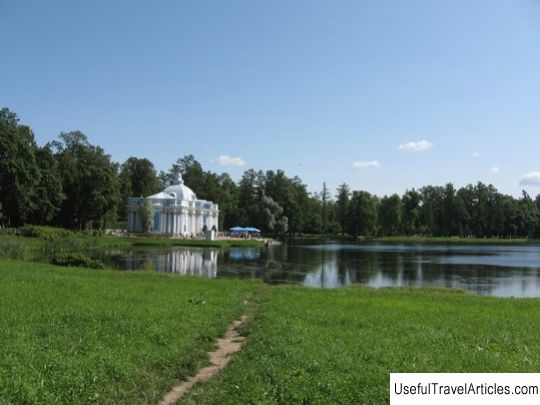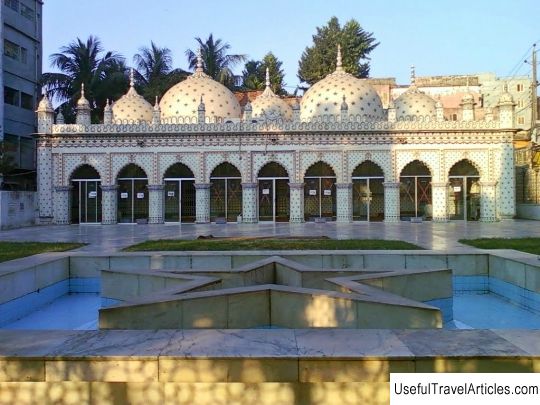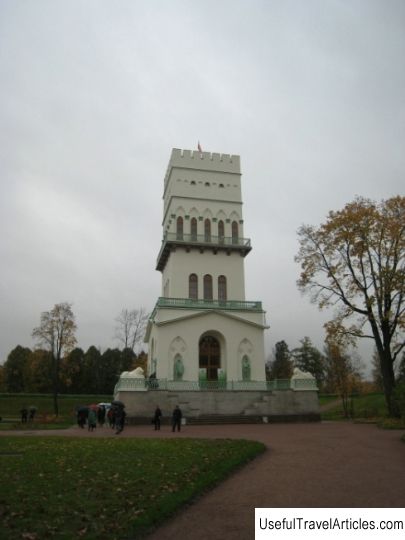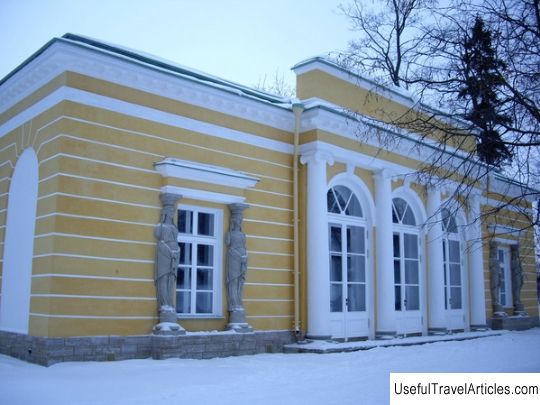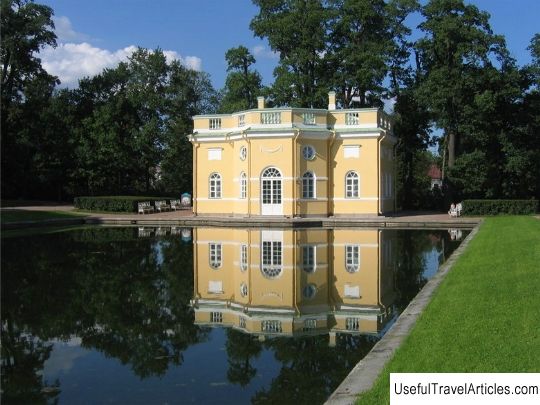Pavilion Chapelle description and photos - Russia - St. Petersburg: Pushkin (Tsarskoe Selo)
Rating: 9,3/10 (1498 votes) 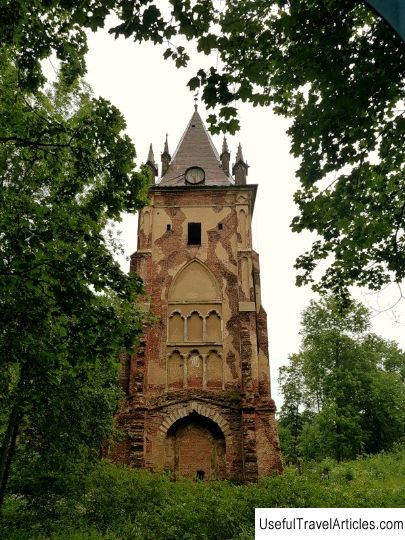
Chapelle Pavilion description and photos - Russia - St. Petersburg: Pushkin (Tsarskoe Selo). Detailed information about the attraction. Description, photos and a map showing the nearest significant objects. Photo and descriptionThe Chapelle pavilion appeared in the Alexander Park in 1825-1828. The name "Chapelle" comes from the French. "Chapelle" - "chapel". The pavilion is made in the form of a Gothic chapel (chapel), destroyed by time. The construction of this pavilion began under Emperor Alexander. The author of the project is A.A. Menelas. Chapelle began to be built on the site of the former Menagerie. Part of the walls of the Lusthaus was used during its construction. The pavilion has two square towers in the plan (one of them seems to have completely "collapsed") and the arches connecting them. Lancet portals-entrances cut through the walls at the bottom, and large lancet windows on the upper tiers. Colored stained-glass windows with biblical themes resonate with the Gothic antiquity in Chapelle. As conceived by the architect, the light penetrating through the stained-glass windows illumined the interior with the figures of angels standing at the base of the vaults with a ghostly flicker. These figures were made by V.I. Demut-Malinovsky. One of the towers is made in the form of ruins, the other in the corners is processed with Gothic buttresses. It ends with a hip roof with sharp spiers and turrets. The central tower is decorated with a cock-weather vane. It can be seen far from the trees. A staircase led to the terrace and the walls of the artificial ruin, which has survived to this day. On it you can climb inside the chapel. The vault of the chapel was painted by the artist V. Dadonov, the walls are light green. The chapelle was built to install in it a marble image of Christ, which Maria Fedorovna acquired from the famous sculptor Dannecker. At first they planned to install it in one of the Moscow churches, but this did not happen, and then the statue was presented to Alexander I. According to legend, one day Dannecker saw the Savior in a dream and since then this image has occupied his imagination to such an extent that the sculptor began to think that Christ himself prompts him to work on the statue. And after much thought, he sculpted a divine image. When the statue was still in the model, the sculptor brought a seven-year-old child to his studio and asked him what kind of statue it was. The child replied that it was the Savior. The sculptor hugged the child happily. He realized that he was moving in the right direction and his artistic idea is understandable even to children. The first sketch of the sculpture was made in 1816, but the statue was completed only by 1824. The sculptural image of the Savior Christ is filled with sadness and divine grace. The Savior's body is covered with clothes that fall in picturesque long folds. He holds one hand on his heart, the other is outstretched. While working on the statue, Dannecker constantly read the Bible and the Gospel, and only the Holy Scriptures gave him the characteristic feature of the image of Christ, he immediately began to correct his creation. In addition to the beauty of Dannecker's artwork, it also bears the stamp of piety. The statue of the Savior stood at the southern wall of the chapel, on a quadrangular pedestal made of granular red granite, facing north. The Savior was carved from a single piece of white marble. The Savior's gaze is fixed on the viewer. Under the Savior's feet is the inscription: "Reg me ad Patrem". It is said that the chapel was held in high esteem by the Masons. According to old-timers, at night one could meet mystics and Masons here, who prayed or stood for hours in spiritual meditation. During the war, stained glass windows and chimes were lost. The entire alley in front of the pavilion gates was mined. The building was practically not damaged, only part of the iron sheets were torn off from one side of the roof and phials were knocked down from two turrets. A German observation post was located in the attic of the tower; a blue stepladder was climbed into it from the platform above the gate. A stable was located in the lower room of the tower. Today the Chapely building is a mothballed object, as it poses a danger to life.                We also recommend reading Mylopotas beach description and photos - Greece: Ios island Topic: Pavilion Chapelle description and photos - Russia - St. Petersburg: Pushkin (Tsarskoe Selo). |
